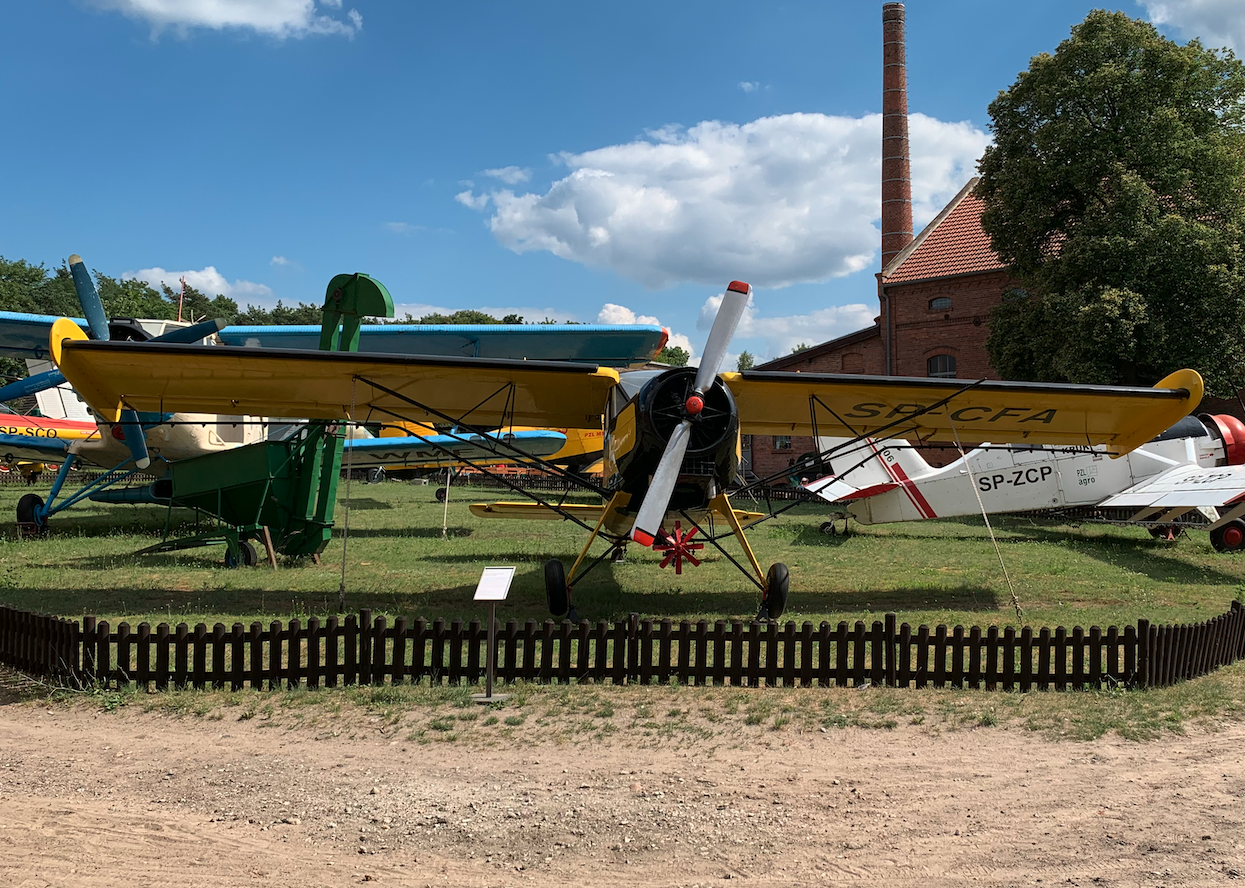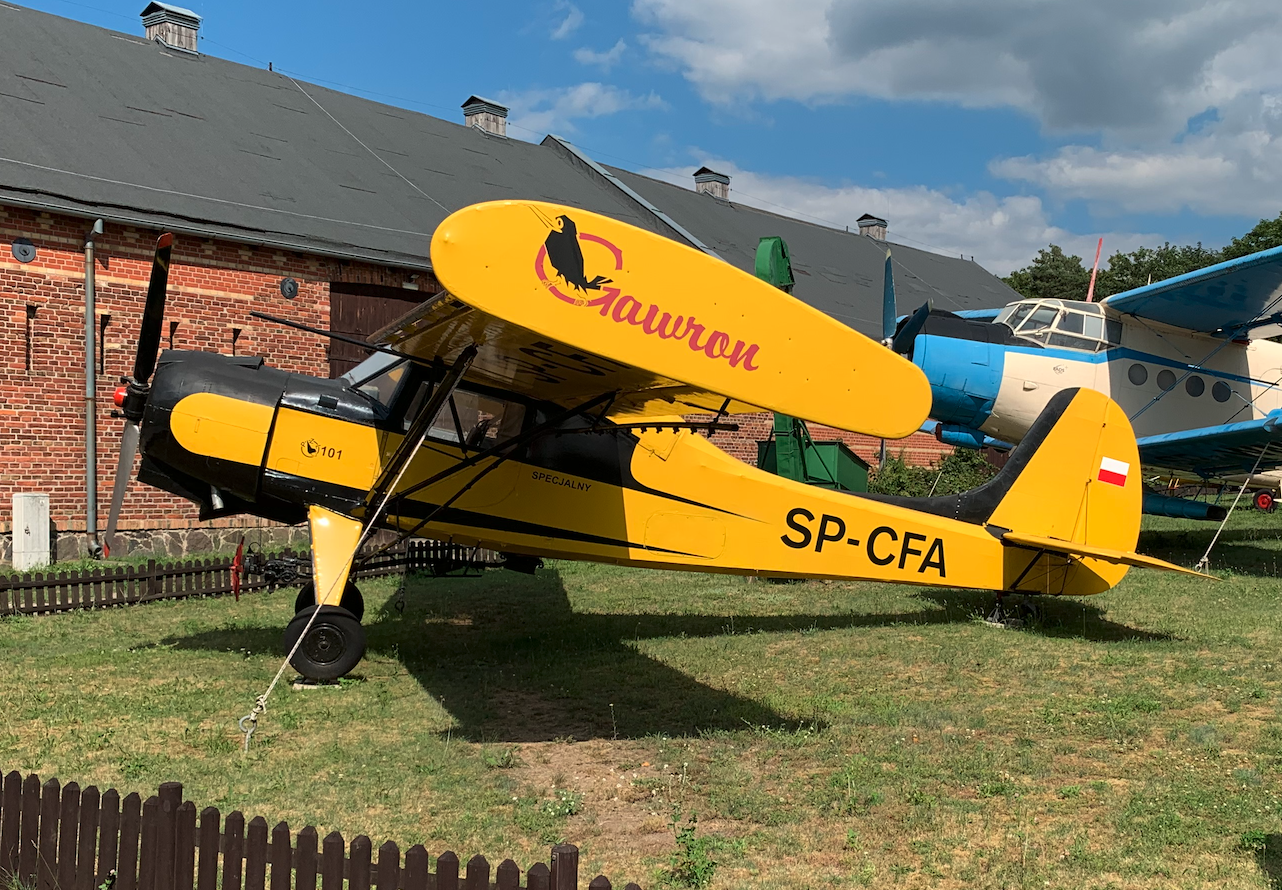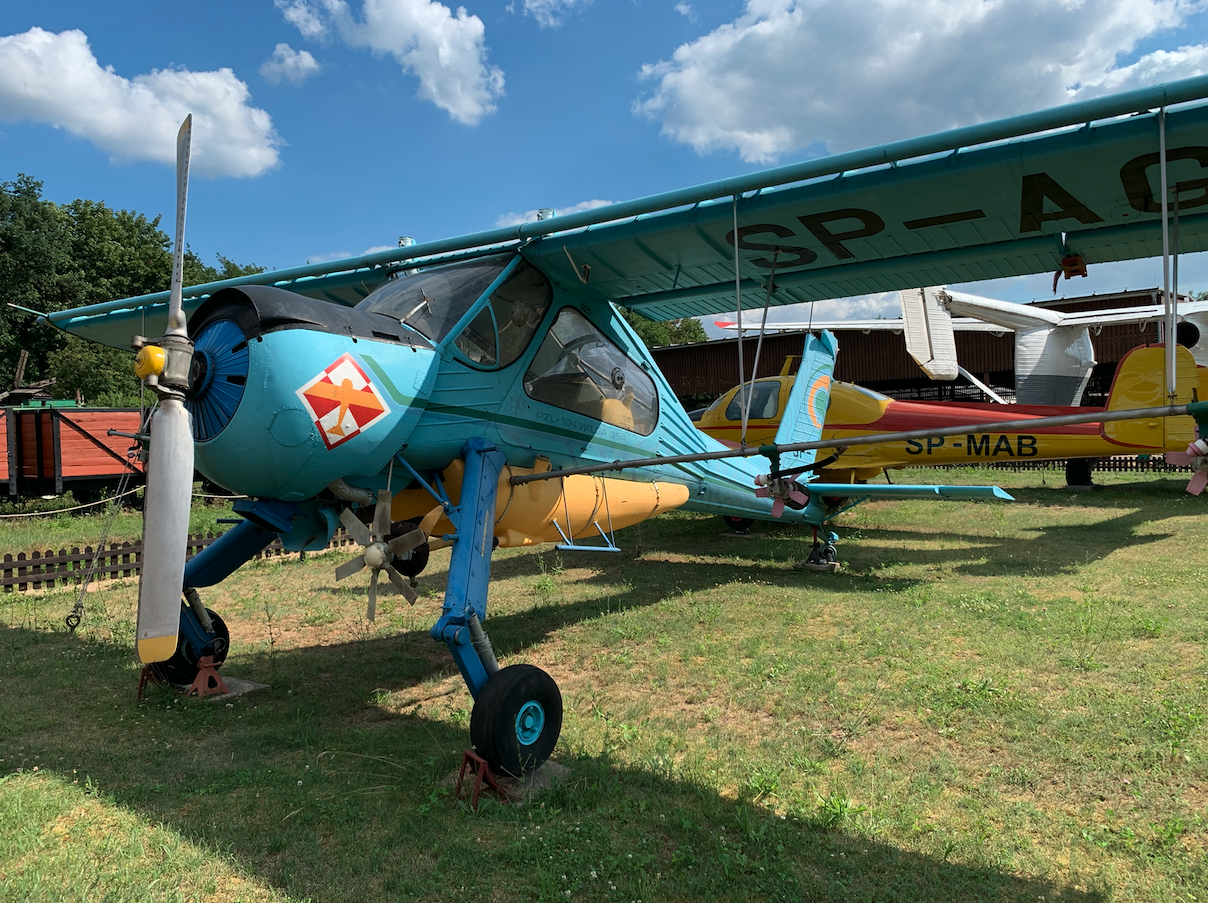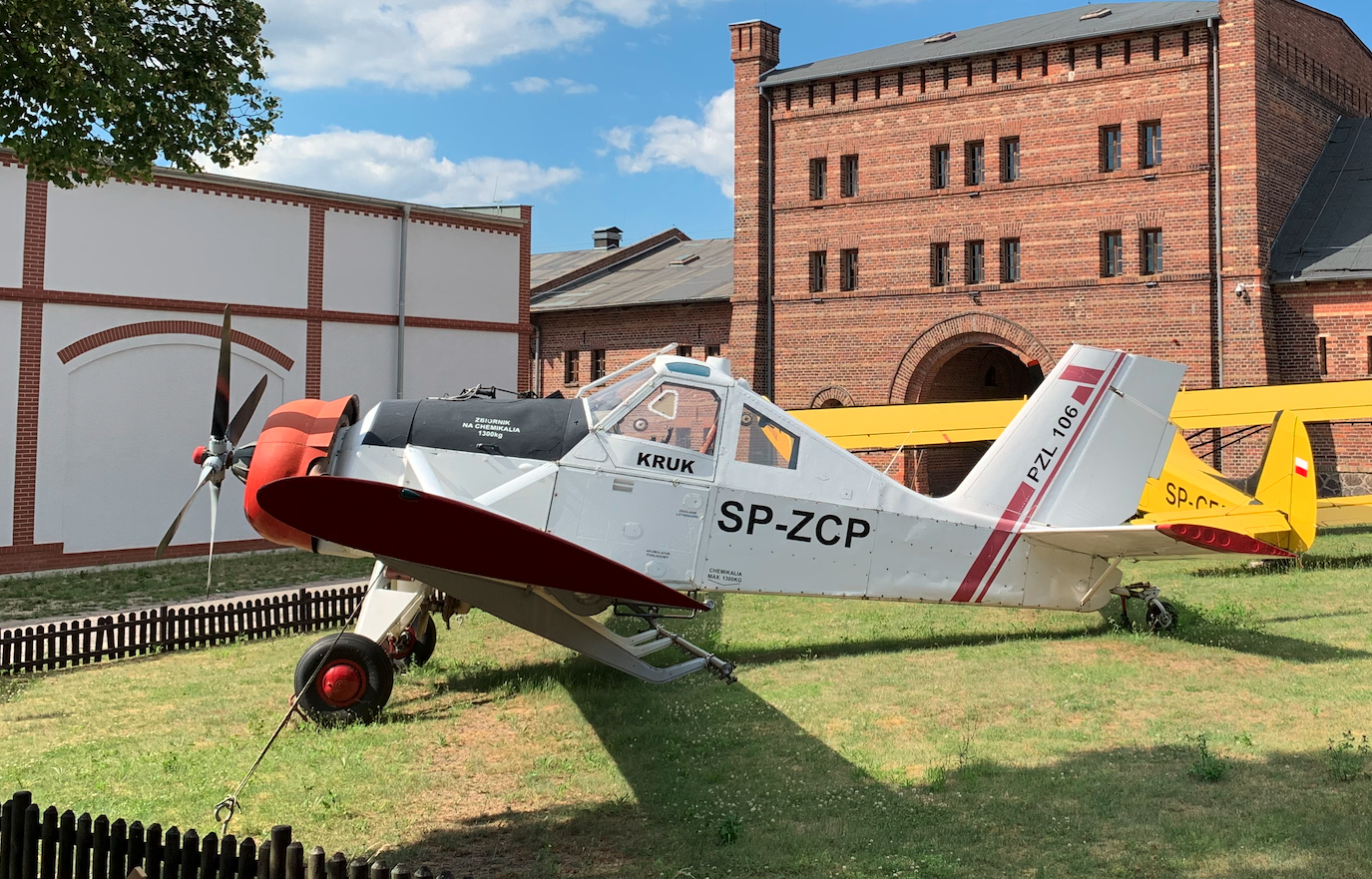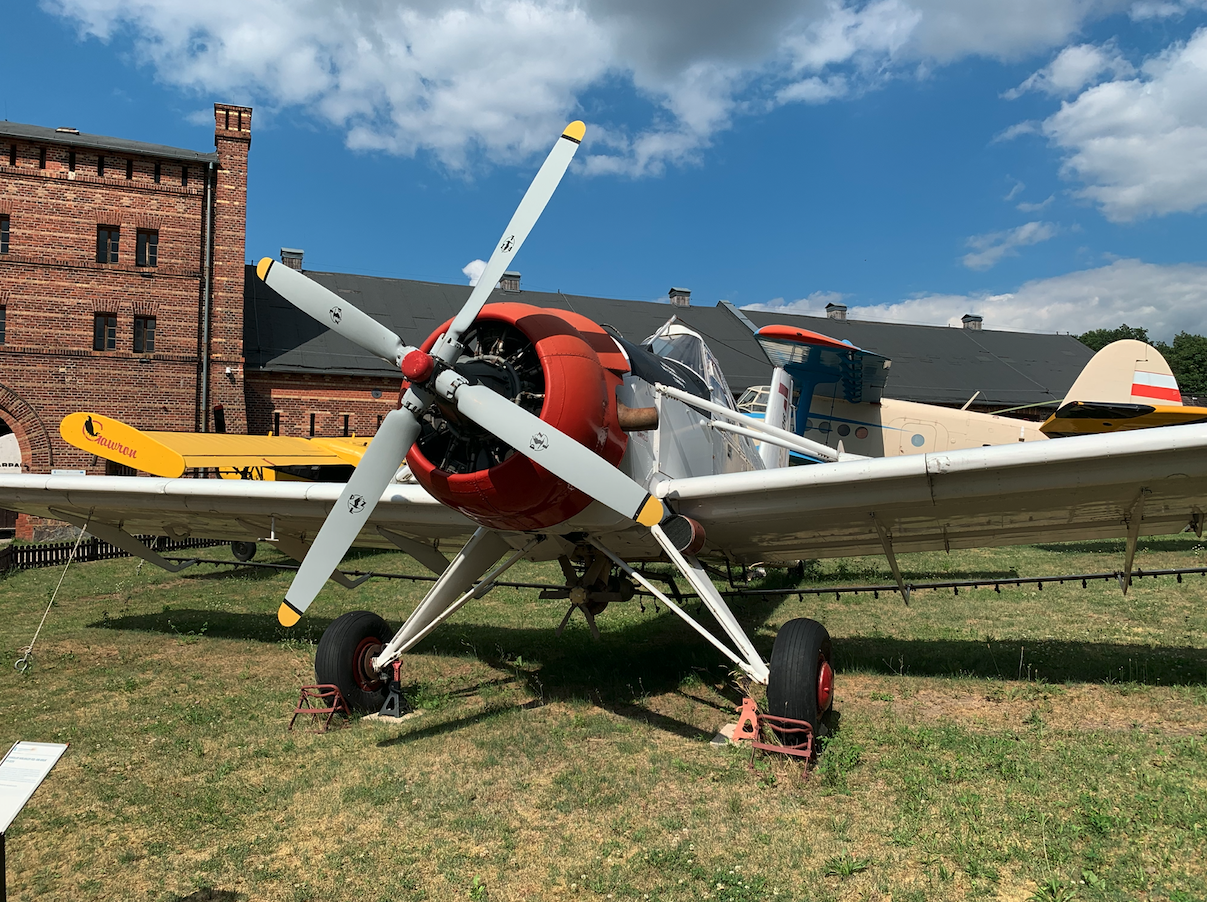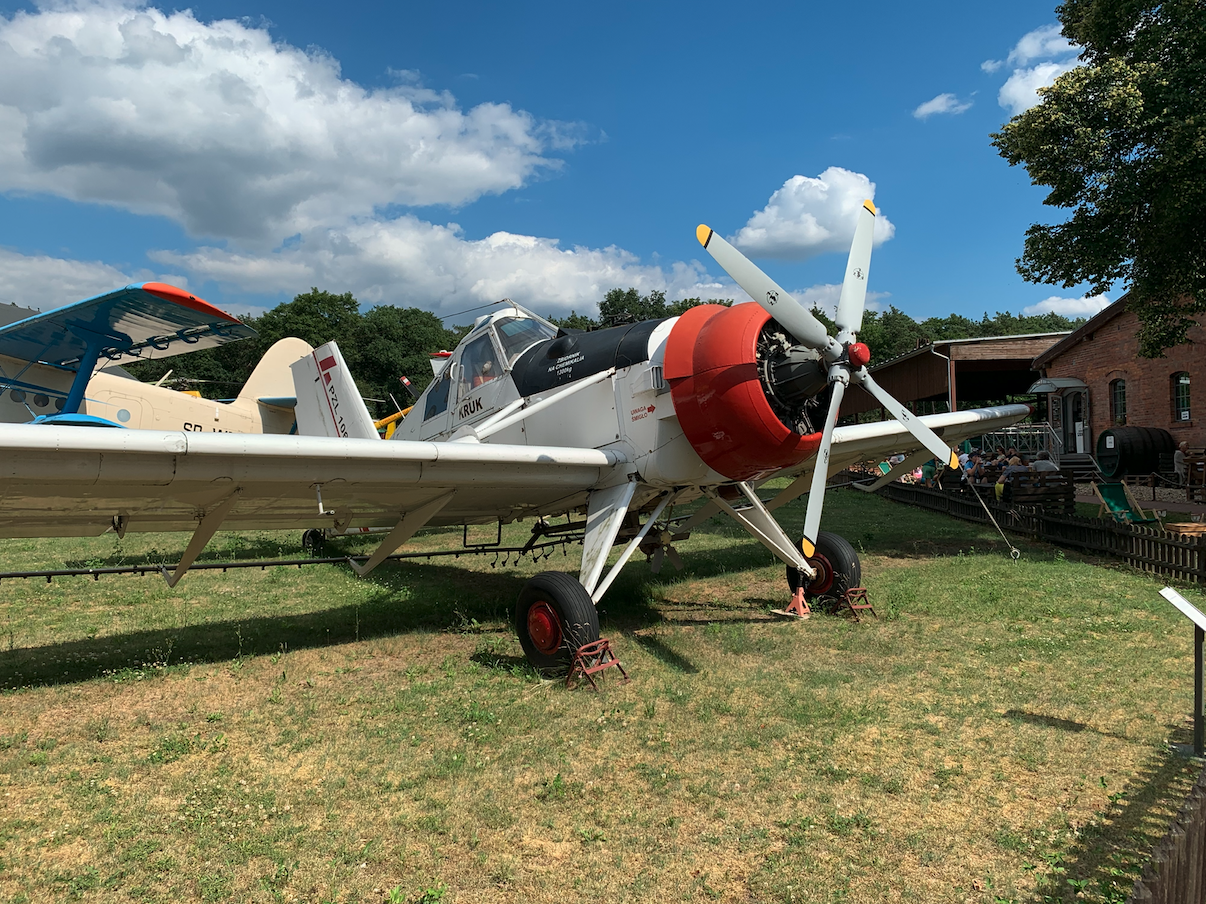Poznań 2020-08-31
Airplanes at the Agricultural Museum in Szreniawa.
National Museum of Agriculture and Food Industry in Szreniawa.
Geographic coordinates: 52.315N 16.797E.
The Museum in Szreniawa, next to Poznań, has the largest collection of aircraft that have been used in agriculture and forestry in Poland over the centuries. At the same time, this section is discussed and presented in detail.
The National Museum of Agriculture and Food Industry in Szreniawa was founded in 1964. Facility address: ul. Dworcowa 5, 62-052 Komorniki. Initially, the museum was called the Agricultural Museum in Szreniawa. The museum is the best institution of this type in the world. If someone is going to visit this museum, it is necessary to reserve a whole day. The museum is located just 15 km from the center of Poznań in the south-west direction. The museum can also be reached by train, because the Szreniawa railway station is located next to the museum. It is the railway line No. 357 Sulechów – Luboń near Poznań.
The museum was founded in 1964. It obtained the status of a national museum in 1975. The institution received its current name, the National Museum of Agriculture and Food Industry in Szreniawa on March 4, 1986. The museum collects and presents monuments related to the history of Polish villages. Since its inception, the museum has gathered over 20,000 museum items. The facility is the only agricultural museum of this rank in Poland and the largest in the world.
The museum covers an area of 5 hectares and covers a vast complex of farm buildings, exhibition halls and gardens for presentations. In the center of the museum there is a very nice palace of the former owners of the property, from 1853. Currently (2022), the museum has 5 additional departments: the Nature and Hunting Museum in Uzarzewo (1977), the Museum of Milling and Water Facilities of the Rural Industry in Jaracz (1981), the Museum of Wicker and Hops in Nowy Tomyśl (1985), the Open-Air Museum and The Beekeeping Museum in Swarzędz (1999), the Meat Management Museum in Sielinek (2004).
The agri-aviation exposition.
The Agrolotnictwo exposition has the largest exhibits in the museum, but not the heaviest. Nine original aircraft are on display in the museum. Most of them were produced and operated in Poland, Europe, Africa, South and North America. There are planes and one helicopter in the open exhibition. All exhibits are in the original colors in which these planes were used in Poland.
PZL-101 Gawron SP-CFA.
WSK No. 4 PZL-101 Gawron SP-CFA No. 30032 – An agricultural plane was built on the basis of the Jakowlew Jak-12 M aircraft in Poland. The case was difficult, because the Yak-12 had a lifting capacity of only 350 kg, with a maximum volume of chemicals of 470 liters. The constructors realized that this solution was provisional and it would be necessary to build a typical agricultural plane. The agricultural plane Gawron was developed by a team led by Stanisław Lassota, M.Sc., engineer in 1956. In 1957, the documentation was ready. In September 1957, the construction of four prototypes began. The first copy was registered by the SP-PAG and made the first flight on May 14, 1958 by Mr. Mieczysław Miłosz. The first four prototypes were sold stump abroad: Spain, Hungary and Austria (2 machines). It is extremely rare for aircraft to be sold abroad before they are put into service in the manufacturer’s country. It worked with the PZL-101 Gawron. The first major series of machines were sold to Hungary and Spain. 325 PZL-101 Gawron aircraft were built. The first 61 machines were designated PZL-101, the others were designated PZL-101 A. The PZL-101 A version Gawron is a modernized agricultural aircraft. It has been produced since 1962. A total of 215 PZL-101 A agricultural machines were built.
PZL-104 Wilga 35, SP-AGW, Nr 19850823.
In the 1950s, basic aviation training of Polish youth was conducted in aeroclubs, which still needed light multi-role aircraft. They were to be easy to pilot, short take-off and landing, economy of use and high operational values. In 1959, a small team at the Aviation Design Center operating at WSK PZL Okęcie started the construction of a new aircraft. The team was headed by MSc. Ryszard Orłowski. The assumptions envisaged the construction of the aircraft in a voluntary high-wing structure, with an all-metal structure. The system emerged automatically, taking into account the experience with the Piper L-4 and PZL-101 Gawron aircraft, derived from the Yak-12 design.
The technical conditions of the new plane were agreed by the PZL Okęcie team with the Aero Club of the Polish People’s Republic and in the spring of 1960, work began. With its small size, the plane was to have a relatively large interior, even capable of accommodating a wounded person on a stretcher.
In February 1961, a prototype for static tests was completed. The first prototype intended for flight tests received SP-PAZ registration. However, due to the lack of an engine, the plane was used for presentation to party officials. Only on April 24, 1962, the plane made its first flight. The pilot was Mr. Mieczysław Miłosz, test pilot of WSK PZL Okęcie. In 1963, the plane entered mass production as the PZL Okęcie PZL-104 Wilga. Serial production of the modernized Wilga 35 aircraft started at the beginning of 1968, and the type certificate was issued on March 31, 1969. The aircraft also received a British BCAR certificate, necessary for export.
During the summer and fall of 1965, tests were carried out on the Wilga in the agricultural version with a tank for 500 kg of chemicals. This program was discontinued as not prospective. The tests probably used the PZL-104 Wilga 35, SP-AGW, No. 19850823 plane. After the tests, the plane was converted into a classic plane and transferred to the Krakow Aero Club. After the service, the plane went to the museum in Szreniawa.
PZL-106 Kruk 106 BR, SP-ZCP, Nr 08850172.
At the turn of the 1960s and 1970s, Poland was forced to produce the Soviet M-15 Belfegor construction. However, Polish constructors, and even party authorities, had doubts about the usefulness of this structure. That is why the PZL-106 Kruk 71 project was presented at the Aviation Industry Union. To everyone’s surprise, the project was accepted and treated as an emergency in relation to the agricultural M-15 Belfegor.
Work on the design was officially started at the beginning of 1971, and the team’s enthusiasm was great. Unfortunately, the PZPR party entered the program. The program became a pre-congress obligation of the Polish United Workers’ Party. The result was tight deadlines and substitute solutions just to announce success. It does not matter that for years the plane was brought to the model version.
The plane was designed in a classic layout. Wings straight, with fixed gills to fit the minimum speed limit of 71 km / h. "T" -shaped tail, which was later changed. Fixed undercarriage with tail wheel.
In June 1972, a full-size mock-up of the plane was ready. The plane received the designation PZL-106 and its own name Kruk, in line with the tradition of the manufacturer, so that the planes were named Polish birds. Prototype PZL-106 Kruk No. 03001 registration SP-PAZ made the first flight on April 17, 1973 (late afternoon). The test pilot, Mr. J. Jędrzejewski, was at the controls. As the pressure was high, the construction of five more prototypes was already underway and the construction of serial aircraft (!) Has started, although not all tests have been completed.
The first prototypes had engines from the West. The collected data indicated a unit with a power of 1 x 440 kW (1 x 600 HP). Such an engine in the star configuration was produced by WSK PZL-Rzeszów. It was a license of the Soviet engine, produced under the designation Lit-3, derived from the engine propelling the Yak-11 plane. The engine was produced to drive the SM-1 helicopter. The possible resumption of the production of this engine in the airplane version depended on the positive tests carried out on the PZL-106 airplane. In the longer term, it was hoped to export these engines to the USA as a drive for agricultural aircraft produced there. As the future has shown, these predictions turned out to be correct. On the basis of the Lit-3 engine, the Lit-3 S (aircraft) engine was developed, which was renamed PZL-3 S, which became the PZL-106 Kruk power unit.
A period of relatively long flight tests, as well as factory, operational and state tests began. After appropriate modifications, the airframe, engine and propeller received a type certificate. The plane was built in accordance with UK regulations marked with the abbreviation BCAR. The Polish certificate was issued by the state aviation supervision authority – the Central Civil Aviation Authority of the Ministry of Transport on June 10, 1977. The plane has become refined. It was possible to start serial production, sell it to domestic and foreign customers and use it safely.
On July 2, 1976, the first serial PZL-106 Kruk A No. 26009 aircraft with SP-WUK registration was tested. The pilot was Mr. J. Wojnar.
Written by Karol Placha Hetman

